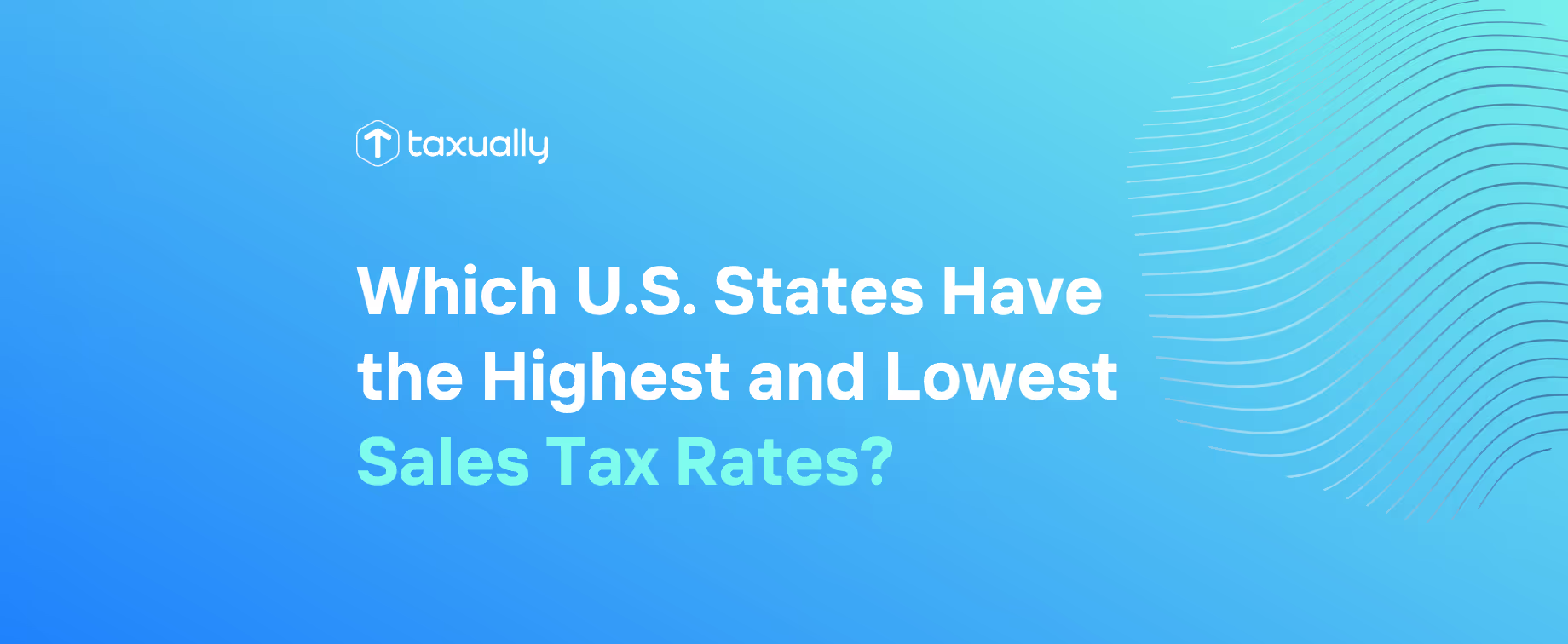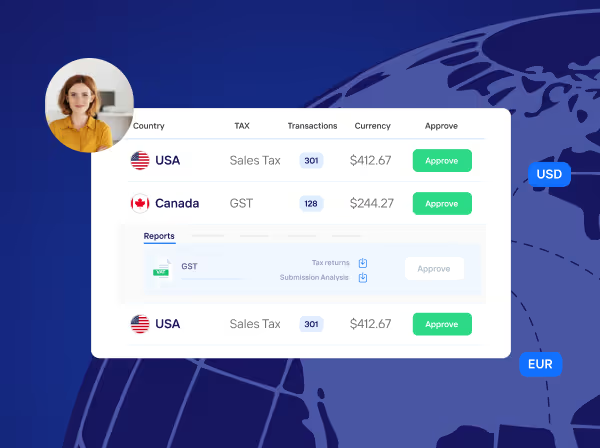Key takeaways
- Sales tax rates vary widely across the U.S., with combined state and local rates reaching over 11% in states like Louisiana and Arkansas.
- Some states keep rates low or have no statewide sales tax, but local taxes (e.g. in Alaska) can still apply.
- Sales tax complexity stems from local autonomy, revenue needs, and differences in state tax structures—making compliance a challenge for multi-state sellers.
Sales tax in the United States is anything but simple. With thousands of jurisdictions, fluctuating rates, and a patchwork of local rules, understanding who pays what—and where—can be a challenge. Unlike countries with a single nationwide VAT or GST, the U.S. leaves it to states and even cities to determine their own sales tax policies. The result? A dizzying range of rates across the country.
Let’s break down where the highest and lowest sales tax burdens fall—and why it’s so complicated.

The states with the highest sales tax rates
If you’re selling in multiple states, you’ve likely run into the sharp contrast between tax rates across borders—or even within the same state. While a few states top the charts with high base statewide rates (7%), like Indiana, Mississippi, Rhode Island, and Tennessee, it’s the combined state and local rates that tell the full story.
The following states have the highest combined average sales tax rates in the country (10.4% - 11.5%):
- Arkansas
- Oklahoma
- Louisiana
- Arizona
- Colorado
- Alabama
- Illinois
- Kansas
- Washington
Local municipalities in these states often impose their own sales taxes, which can push the total rate significantly higher than the state’s base. In places like Louisiana and Colorado, local taxes can double the effective rate consumers pay at checkout.
The states with the lowest sales tax rates
On the other end of the spectrum, several states manage to keep their sales tax burden relatively low. These states often rely more on income or property taxes, or have smaller budgets to manage.
States with some of the lowest combined state and local sales tax rates (4.5% - 6.25%) include:
- Hawaii
- Maine
- Wisconsin
- Kentucky
- Maryland
- Michigan
- Washington, D.C.
- Wyoming
- Massachusetts
It’s important to note that some of these states have a low base rate but minimal to no local add-ons—offering businesses and consumers a more predictable tax environment.
What about states with no statewide sales tax?
There are five so-called “NOMAD” states—New Hampshire, Oregon, Montana, Alaska, and Delaware—that don’t have a statewide sales tax. However, this doesn’t necessarily mean no sales tax whatsoever.
Even in these tax-friendly states, local jurisdictions can step in. In Alaska, for instance, communities have formed the Alaska Remote Seller Sales Tax Commission, allowing them to collectively administer local sales taxes that can reach 7.5%, rivaling even the highest-tax states.
Why are sales tax rates so different?
The reason for the variation comes down to a mix of economic, political, and demographic factors. States set their own tax policies based on:
- Revenue needs – Some states need more income to support larger populations, expansive public services, or infrastructure projects.
- Other tax structures – States with low or no income taxes (like Florida or Texas) often rely more on sales tax to balance budgets.
- Local flexibility – In “home rule” states, local governments can impose their own sales taxes to fund schools, emergency services, and local initiatives.
This flexibility creates a wide spectrum of rates—and a minefield for sellers trying to stay compliant.
Whether you're operating in high-tax states like Louisiana or Illinois, or low-burden zones like Wyoming or Delaware, it’s critical to understand the full picture—state and local.
Do you need help with your sales tax compliance? Book a free call with one of our sales tax experts to find bespoke solutions for your business, optimize your tax costs, and reach millions of new potential customers.
Frequently asked questions
New Year's Day - 1/1/2024Memorial Day - 5/27/20244th of July - 7/4/2024Labor Day - 9/2/2024Thanksgiving Day - 11/28/2024Day after Thanksgiving - 11/29/2024Christmas Eve - 12/24/2024Christmas Day - 12/25/2024
Which state has the highest sales tax rate?
Louisiana typically ranks highest when combining state and local sales tax rates, often exceeding 11%.
Are there any states with no sales tax at all?
Yes, the NOMAD states—New Hampshire, Oregon, Montana, Alaska, and Delaware—don’t have a statewide sales tax. However, local taxes may still apply in some areas, especially in Alaska.
Why do sales tax rates differ so much between states?
Each state sets its own tax policies based on factors like revenue needs, population size, other taxes (e.g., income tax), and whether local governments are allowed to impose additional sales taxes.
Is it easier to manage sales tax in states with no local add-ons?
Generally, yes. States with low or no local sales taxes offer a simpler and more predictable tax environment for businesses.



















